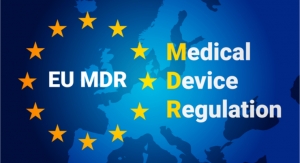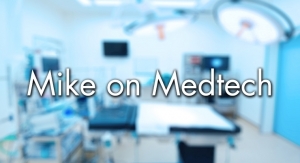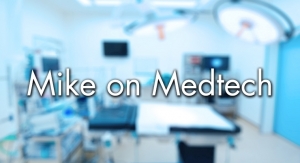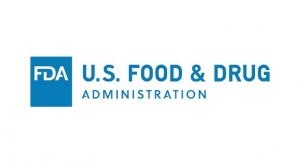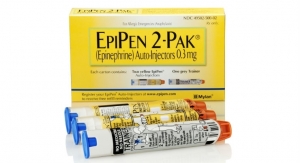Chuck Cimalore and Rasean Hamilton, Omnify Software and EarLens09.07.18
Beyond the requirement for medical device companies, having a quality management system (QMS) provides a framework to deliver consistency and efficiency in a business. The two main regulations requiring a QMS are FDA 21 CFR 820 (U.S.) and ISO 13485 (O.U.S.). The U.S. Food and Drug Administration (FDA) defines a quality management system as the organizational structure, responsibilities, procedures, processes, and resources for implementing quality management.1 ISO 13485 requires it in order to help ensure products consistently meet applicable requirements and specifications.2 The scope of these regulations includes: management responsibilities; production, process, material, equipment, and facility controls; complaint handling; document and product change controls; design controls; and corrective and preventive actions.
A QMS requires having documented procedures for most major areas of a business. Having documented procedures provides the baseline of what is required, as well as instructions on what to do. This prevents requirements from being missed, reduces time spent trying to figure out what the correct actions are, facilitates uniformity of process, and minimizes employees making up their own individual practices by enforcing the use of standard operating procedures. A quality management system is the framework for how to design, develop, manufacture, and distribute products. It is also the means to gather customer feedback and decide what to do with that feedback. It plays a part in how to continually improve a business and a product. In a nutshell, the quality system ultimately defines how firms conduct business.
Although regulations from governing bodies such as ISO and FDA require a QMS, it’s up to the manufacturer to determine how to meet the requirements. So, when developing or modifying a QMS, what are some key factors for organizations to consider?
To build the right QMS, an organization has to know its business. Its business needs (current and future) will determine the framework of the QMS. Whatever QMS is put in place, it needs to be efficient and adaptable to the business. If it’s not efficient, no one will want to follow it. If it’s not adaptable, employees will end up finding workarounds, which will ultimately derail any efficiency and consistency built into the QMS.
When implementing a QMS, it is also important to consider current trends in the industry such as social media, supplier management, and the changing regulatory environment. In this day of mergers and acquisitions, it’s becoming harder and harder to know who your suppliers really are. And what about your supplier’s suppliers? The rise in outsourcing has made it much more difficult to ensure the quality of the supply chain. A QMS has to be able to navigate these ever-changing waters.
Social media is not just for Millennials—even FDA has a Twitter account. Whether a company has a presence on social media or not, it can be responsible for statements made on social media. It’s important that a QMS is poised to contend with social media. It’s also important to have a QMS flexible enough to adapt to a changing regulatory environment. The past few years have ushered in a number of regulatory changes both domestically and internationally. We’ve seen the introduction of Unique Device Identifiers (UDI), European Medical Device Regulations (EU MDR), and the Medical Device Single Audit Program (MDSAP), to name a few—and there are even more changes expected.
Patient-Centric Data-Driven Design
If you have had the opportunity to sit down recently with a regulatory auditing body, then you understand the regulations are meant to drive an organization to do what is right for the patient/end user. The design and development of a device has to center around the patient/end user’s needs. The QMS has to provide a method that tracks patient/end user needs as they are iterated and translated into design inputs, design outputs, and then subsequently verified and validated.
The QMS will also need to keep track of the patient risks associated with the design. Patient/end user feedback and complaints also play a significant role in making medical device improvements. The QMS needs to facilitate trending of various information received from customers, for example:
Additionally, the QMS has to enable the end user/patient data collected and any trends and analyses to be dispersed to the relevant parties within the organization. Often times, this data exists on different platforms (i.e., sales/customer service systems, ERP systems, complaint systems, servicing systems, etc.). The QMS has to account for the various sources of data within the organization, and provide a means to collect the data across different platforms.
Companies need to consider the level of risk the product contains—especially in the medical device field—and correlate complaint handling to that level of risk. It’s key to look ahead a year or two and analyze whether more products are anticipated and whether they will be higher or lower risk—or if they will be distributed to other countries. In addition, an organization will need to know what type of information it is required to capture based on the regulations necessary to meet, and determine the type of metrics to track (for example, complaint trends and process bottlenecks) to help make improvements.
To help illustrate the discussion above, here’s a look at what would go into selecting and utilizing a software-based QMS solution to address complaint handling in a company. Some things to consider in the selection process include:
Understand the budget: This includes system cost; implementation and validation costs; maintenance, licensing, and support costs.
Understand the software’s capabilities and limitations: How easy is it to use? How easy is it to make changes? What types of changes can be made by the in-house team? What types of changes can only be made by the QMS software provider? How is access restricted or enabled to the employees? (By person, by department, user profile, etc.; read/write, read-only.)
Understand timing and resources: Setup, validation, implementation, maintenance.
After the complaint handling system has been implemented, and users have experienced some run time with it, it’s important to take a step back and examine how things are progressing. Is the system helping to identify complaint trends? If not, determine what additional information and/or reporting is needed to identify those trends.
Is the system feeding complaint information back into the quality system to facilitate continual product improvement? If not, determine what information needs to get to which part of the organization, and implement a defined process to ensure the transfer of information happens. Information can be transferred in a variety of ways: automated reports, periodic presentations, or notification of received and/or investigated complaints.
Are you getting the efficiencies that were expected? If not, identify the bottlenecks and determine what changes are needed to reach those efficiencies. Sometimes, the system must be simplified in order to make it efficient. Is the system facilitating compliance? If not, determine where the gaps are and identify what changes are needed. Lastly, is the system adapting to business needs? If not, consider simplifying the system to provide the flexibility the business needs. Organizations should periodically reassess the system and make continual improvements as necessary.
Selecting a Software-Based QMS
There are a variety of software-based QMS solutions to choose from, such as a “pure-play” solution—PLM-based and ERP-based, to name a few. Selecting the right system for an organization takes some research. Software-based quality management systems used to be reserved for stable, mature, and large corporations. But more and more software-based QMS solutions are turning up in mid-to-late stage startup companies, largely because of the inherent efficiency, traceability, and paper reduction they offer.
PLM-based solutions, which work to deliver an integrated quality and product lifecycle management (PLM) system, are most certainly a growing trend due to a PLM’s inherent ability to connect information to a single product record and ensure controlled processes. With a single system to manage both product and quality information, PLM-based quality management solutions provide a holistic view of the product across an organization, which simplifies the aggregation of data for necessary reporting and analysis.
These systems also capture the “voice of the customer” with direct feedback to engineering to improve product design. A PLM-based system is very appealing to the small-to-medium sized space (SMB) because it eliminates the need to invest in multiple systems, helps to address quality issues early on to save money, and grants cost-effective and easy-to-adopt solutions. In addition, PLM ensures that SMBs have the proper processes in place to meet regulatory compliance guidelines. Selecting the right PLM-based QMS can address the considerations noted previously.
The quality management system is vital to any medical device company. Not only is it a regulatory requirement, it also sets the framework for how a device is designed, developed, manufactured, and distributed. In addition, it ensures that customer feedback, including complaints, are captured and fed back into the system, resulting in continual product improvement. When setting up/selecting a QMS, it’s important to know your business, consider current trends in your industry, and develop a process that is efficient and adaptable. The regulations require that you have a QMS. It’s up to you to adopt and design a QMS that works for your business.
References
Chuck Cimalore, the chief technology officer and president of Omnify Software, is an expert in web-based PLM solutions for small to mid-size businesses, and has helped original equipment manufacturers streamline development cycles, accelerate product innovation, and improve bottom-line profitability.
Rasean Hamilton is the director of quality systems for EarLens. She has over 20 years of experience in the medical device industry and over 10 years of experience in quality. Rasean is an expert in compliance.
A QMS requires having documented procedures for most major areas of a business. Having documented procedures provides the baseline of what is required, as well as instructions on what to do. This prevents requirements from being missed, reduces time spent trying to figure out what the correct actions are, facilitates uniformity of process, and minimizes employees making up their own individual practices by enforcing the use of standard operating procedures. A quality management system is the framework for how to design, develop, manufacture, and distribute products. It is also the means to gather customer feedback and decide what to do with that feedback. It plays a part in how to continually improve a business and a product. In a nutshell, the quality system ultimately defines how firms conduct business.
Although regulations from governing bodies such as ISO and FDA require a QMS, it’s up to the manufacturer to determine how to meet the requirements. So, when developing or modifying a QMS, what are some key factors for organizations to consider?
To build the right QMS, an organization has to know its business. Its business needs (current and future) will determine the framework of the QMS. Whatever QMS is put in place, it needs to be efficient and adaptable to the business. If it’s not efficient, no one will want to follow it. If it’s not adaptable, employees will end up finding workarounds, which will ultimately derail any efficiency and consistency built into the QMS.
When implementing a QMS, it is also important to consider current trends in the industry such as social media, supplier management, and the changing regulatory environment. In this day of mergers and acquisitions, it’s becoming harder and harder to know who your suppliers really are. And what about your supplier’s suppliers? The rise in outsourcing has made it much more difficult to ensure the quality of the supply chain. A QMS has to be able to navigate these ever-changing waters.
Social media is not just for Millennials—even FDA has a Twitter account. Whether a company has a presence on social media or not, it can be responsible for statements made on social media. It’s important that a QMS is poised to contend with social media. It’s also important to have a QMS flexible enough to adapt to a changing regulatory environment. The past few years have ushered in a number of regulatory changes both domestically and internationally. We’ve seen the introduction of Unique Device Identifiers (UDI), European Medical Device Regulations (EU MDR), and the Medical Device Single Audit Program (MDSAP), to name a few—and there are even more changes expected.
Patient-Centric Data-Driven Design
If you have had the opportunity to sit down recently with a regulatory auditing body, then you understand the regulations are meant to drive an organization to do what is right for the patient/end user. The design and development of a device has to center around the patient/end user’s needs. The QMS has to provide a method that tracks patient/end user needs as they are iterated and translated into design inputs, design outputs, and then subsequently verified and validated.
The QMS will also need to keep track of the patient risks associated with the design. Patient/end user feedback and complaints also play a significant role in making medical device improvements. The QMS needs to facilitate trending of various information received from customers, for example:
- Feedback and complaints (type, frequency, event date, complaint date)
- End user information (end user ID number, user facility name, how long device was in use, number of complaints)
- Device information (make, model, serial number, manufacture date, expiration dates, etc.)
Additionally, the QMS has to enable the end user/patient data collected and any trends and analyses to be dispersed to the relevant parties within the organization. Often times, this data exists on different platforms (i.e., sales/customer service systems, ERP systems, complaint systems, servicing systems, etc.). The QMS has to account for the various sources of data within the organization, and provide a means to collect the data across different platforms.
Companies need to consider the level of risk the product contains—especially in the medical device field—and correlate complaint handling to that level of risk. It’s key to look ahead a year or two and analyze whether more products are anticipated and whether they will be higher or lower risk—or if they will be distributed to other countries. In addition, an organization will need to know what type of information it is required to capture based on the regulations necessary to meet, and determine the type of metrics to track (for example, complaint trends and process bottlenecks) to help make improvements.
To help illustrate the discussion above, here’s a look at what would go into selecting and utilizing a software-based QMS solution to address complaint handling in a company. Some things to consider in the selection process include:
Understand the budget: This includes system cost; implementation and validation costs; maintenance, licensing, and support costs.
Understand the software’s capabilities and limitations: How easy is it to use? How easy is it to make changes? What types of changes can be made by the in-house team? What types of changes can only be made by the QMS software provider? How is access restricted or enabled to the employees? (By person, by department, user profile, etc.; read/write, read-only.)
Understand timing and resources: Setup, validation, implementation, maintenance.
After the complaint handling system has been implemented, and users have experienced some run time with it, it’s important to take a step back and examine how things are progressing. Is the system helping to identify complaint trends? If not, determine what additional information and/or reporting is needed to identify those trends.
Is the system feeding complaint information back into the quality system to facilitate continual product improvement? If not, determine what information needs to get to which part of the organization, and implement a defined process to ensure the transfer of information happens. Information can be transferred in a variety of ways: automated reports, periodic presentations, or notification of received and/or investigated complaints.
Are you getting the efficiencies that were expected? If not, identify the bottlenecks and determine what changes are needed to reach those efficiencies. Sometimes, the system must be simplified in order to make it efficient. Is the system facilitating compliance? If not, determine where the gaps are and identify what changes are needed. Lastly, is the system adapting to business needs? If not, consider simplifying the system to provide the flexibility the business needs. Organizations should periodically reassess the system and make continual improvements as necessary.
Selecting a Software-Based QMS
There are a variety of software-based QMS solutions to choose from, such as a “pure-play” solution—PLM-based and ERP-based, to name a few. Selecting the right system for an organization takes some research. Software-based quality management systems used to be reserved for stable, mature, and large corporations. But more and more software-based QMS solutions are turning up in mid-to-late stage startup companies, largely because of the inherent efficiency, traceability, and paper reduction they offer.
PLM-based solutions, which work to deliver an integrated quality and product lifecycle management (PLM) system, are most certainly a growing trend due to a PLM’s inherent ability to connect information to a single product record and ensure controlled processes. With a single system to manage both product and quality information, PLM-based quality management solutions provide a holistic view of the product across an organization, which simplifies the aggregation of data for necessary reporting and analysis.
These systems also capture the “voice of the customer” with direct feedback to engineering to improve product design. A PLM-based system is very appealing to the small-to-medium sized space (SMB) because it eliminates the need to invest in multiple systems, helps to address quality issues early on to save money, and grants cost-effective and easy-to-adopt solutions. In addition, PLM ensures that SMBs have the proper processes in place to meet regulatory compliance guidelines. Selecting the right PLM-based QMS can address the considerations noted previously.
The quality management system is vital to any medical device company. Not only is it a regulatory requirement, it also sets the framework for how a device is designed, developed, manufactured, and distributed. In addition, it ensures that customer feedback, including complaints, are captured and fed back into the system, resulting in continual product improvement. When setting up/selecting a QMS, it’s important to know your business, consider current trends in your industry, and develop a process that is efficient and adaptable. The regulations require that you have a QMS. It’s up to you to adopt and design a QMS that works for your business.
References
- Title 21, Code of Federal Regulations, Part 820 [21 CFR 820.3(v)].
- ISO13485:2016—Medical devices—Quality management systems—Requirements for regulatory purposes.
Chuck Cimalore, the chief technology officer and president of Omnify Software, is an expert in web-based PLM solutions for small to mid-size businesses, and has helped original equipment manufacturers streamline development cycles, accelerate product innovation, and improve bottom-line profitability.
Rasean Hamilton is the director of quality systems for EarLens. She has over 20 years of experience in the medical device industry and over 10 years of experience in quality. Rasean is an expert in compliance.


